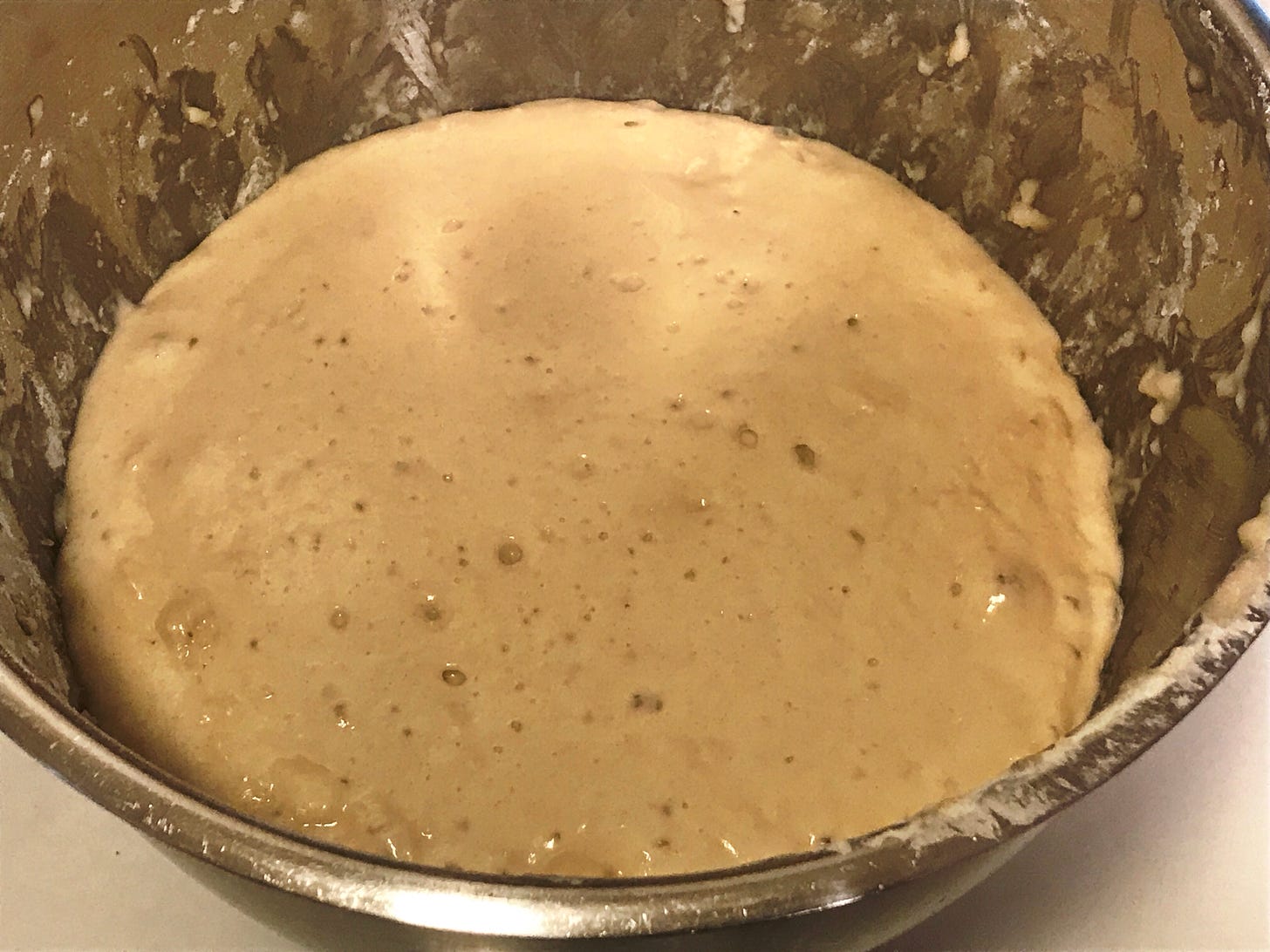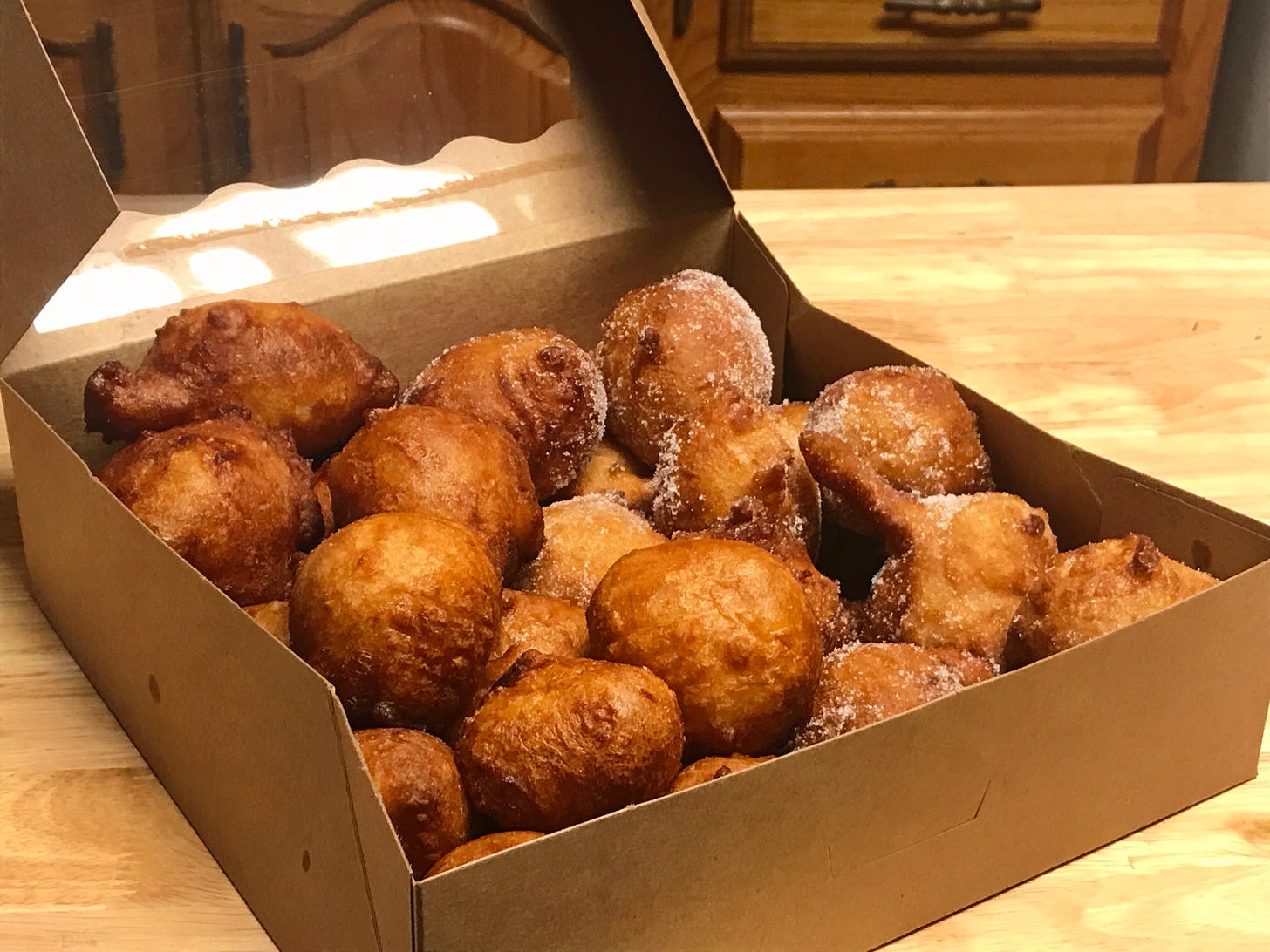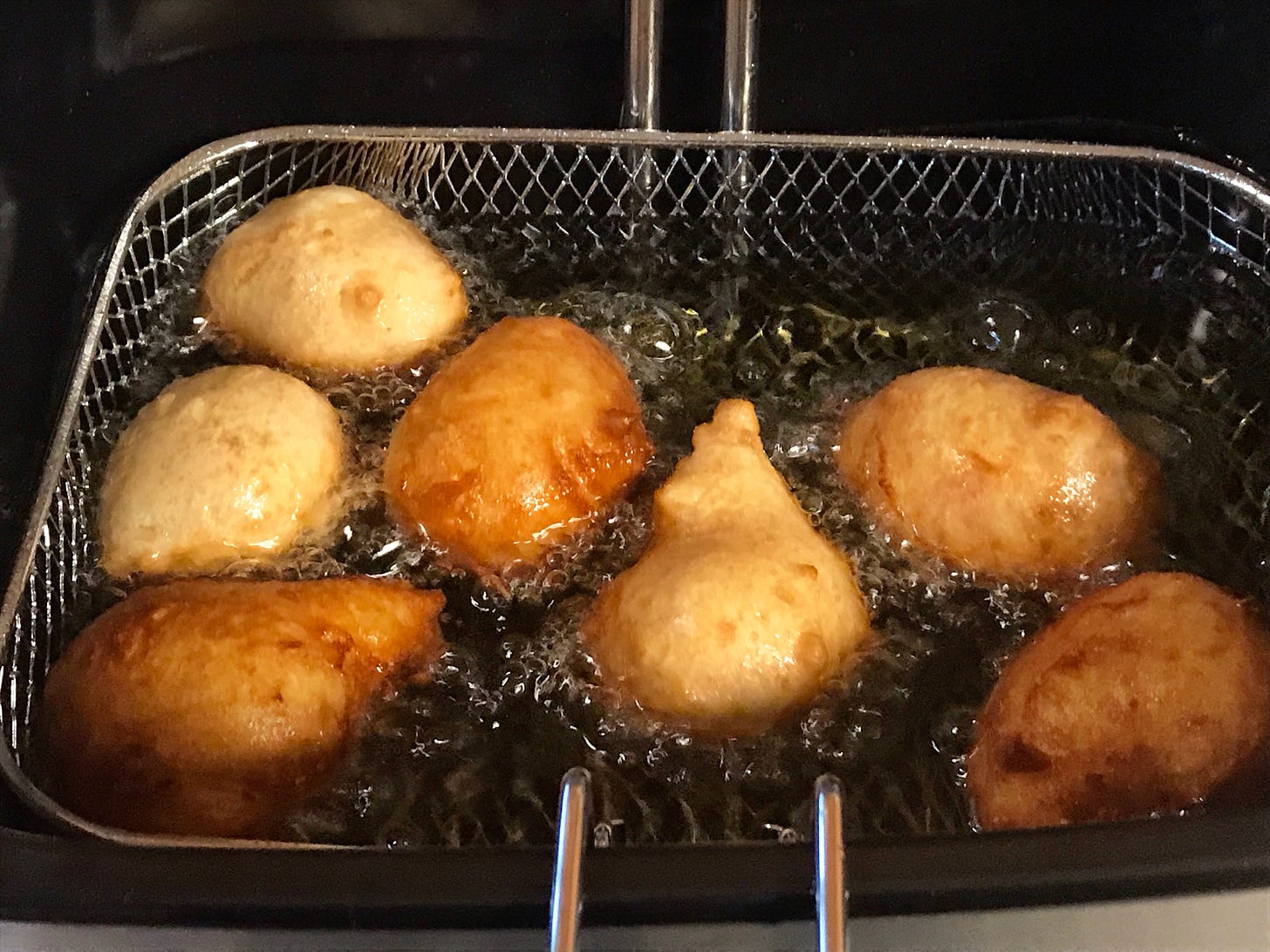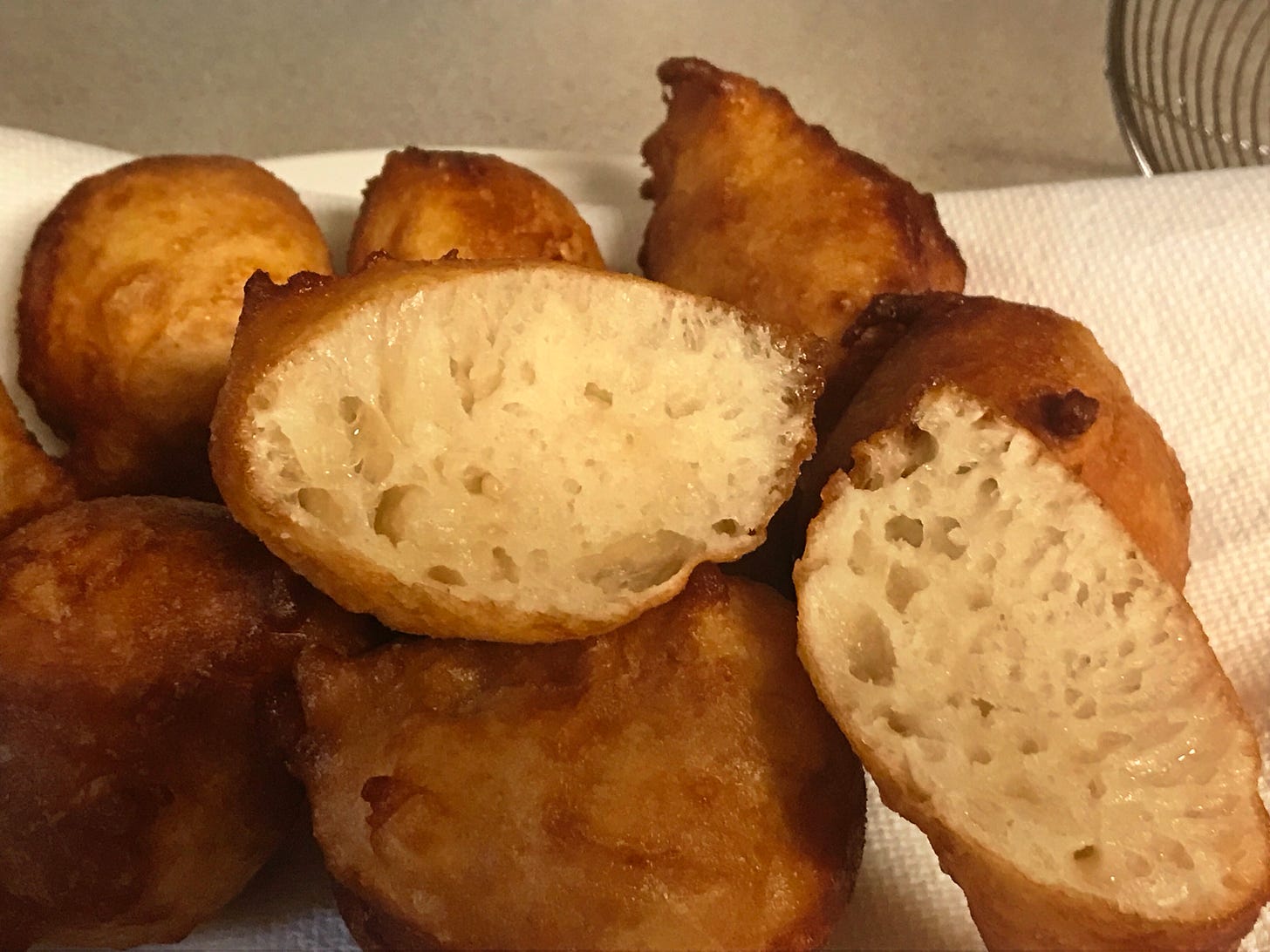Eat This While You Read That: Joelle Presby
It's rare I can time a ETWYRT post with a book launch, but The Debare Snake Launcher came out this week, and thanks to a timely author reminder, I have the recipe for you to enjoy while you read your fresh new book!

The book opens with food, but not the stuff you'd willingly eat. So, then this will be a great snack while you enjoy the tale. It's something like a doughnut, or a beignet, or simply that there are global deliciously fried breads, sweetened lightly, to be munched while on your way to work, market, or really any destination. Street food is a universal lingo.
In another unusual move for me, I'm using the full recipe Joelle sent me, because her notes and additions are very interesting. Without further ado:
Cameroonian Makala
480g warm water (about 2 cups & 1 tablespoon) [Lukewarm temp to avoid killing the yeast.]
7g active dry yeast (2 ¼ teaspoons – one packet)
440g flour (3 ½ cups) [Which kind of flour varies by region, millet flour was most common in northern and central Cameroon. I can’t get that in the US and use wheat flour.]
150g sugar (3/4 cup) [This would have been fresh cane sugar in most places, but white granulated sugar works just fine.]
8g salt (1/2 Tablespoon)
Oil for deep frying [Which kind varied, peanut oil was most common.]

Cedar's Note: The dough is close to a batter in consistency.
Directions
Mix salt, sugar, water, and yeast. Wait five minutes to make sure the yeast is nice and bubbly.
Stir in flour.
Let rise at least 1-2 hours. (If you’ve used whole wheat or half whole wheat flour make sure to give it the entire 2 hours. I suspect the women with the streetside cookpots who regularly began selling makala at dawn to the folks trudging out to work on the farms actually had their dough rising overnight.)
Heat at least 5cm (about 3 inches) oil in a large pot. The oil doesn’t need to be wildly boiling, and I never saw anyone use a cooking thermometer. Drop in little bits of the dough to test the oil temp. When the dough bits float, you’ve got it hot enough.
Shape one ball at a time with your hands or a spoon and drop them into the hot oil. You want a consistent size for even cooking in batches, but which size varies by cook. Slightly larger than golf ball to about softball size were common with most towards the smaller end because getting the internals fully cooked without overcooking the outside is easy with a somewhat smaller size.
Cook the makala for about 2 minutes until golden brown and turn them with a large slotted spoon. Cook another 2 minutes to brown the underside.
Let cool on paper towels or cloth.
Some folks sprinkle sugar on them after cooking. They used granulated cane sugar, not powdered sugar. The street vendors mostly sold makala fresh from the pot without any additions.

Cooking notes:
I fried these in 375F oil, dropping the dough into the oil carefully with quenelles from two teaspoons - you don't want to use a tablespoon, or they likely won't cook through properly. They may turn themselves, but likely you will want to keep an eye on them and a spider or slotted spoon handy to prompt them to roll over and cook evenly.

I tossed some in granulated sugar while still quite warm, and tried them without, as well. They are sweet without the extra sugar, but for small children the sugar will likely be the way to go!

They fried up with a fantastic internal structure, moist, a little chewy, and still tender. So fluffy! Yummy!
You can find the full index of Eat This While You Read That here, with over 80 recipes and books to explore.




